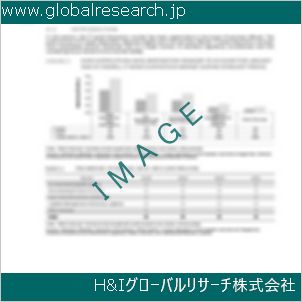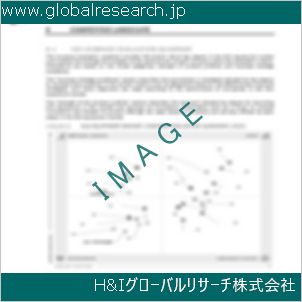1. Preface
1.1. Market Definition and Scope
1.2. Market Segmentation
1.3. Key Research Objectives
1.4. Research Highlights
2. Assumptions
3. Research Methodology
4. Executive Summary
5. Market Overview
5.1. Market Dynamics
5.1.1. Drivers
5.1.2. Restraints
5.1.3. Opportunities
5.2. Key Trends Analysis
5.2.1. Demand Side Analysis
5.2.2. Supply Side Analysis
5.3. Key Market Indicators
5.4. Porter’s Five Forces Analysis
5.5. Value Chain Analysis
5.6. Industry SWOT Analysis
5.7. COVID-19 Impact Analysis
5.8. Regulatory Framework
5.9. Global Concrete Surface Retarders Market Analysis and Forecast, 2017 – 2031
5.9.1. Market Value Projections (US$ Mn)
5.9.2. Market Volume Projections (Thousand Units)
6. Global Concrete Surface Retarders Market Analysis and Forecast, By Type
6.1. Global Concrete Surface Retarders Market Size (US$ Mn and Thousand Units), By Type, 2017 – 2031
6.1.1. Water-based
6.1.2. Solvent-based
6.2. Incremental Opportunity, By Type
7. Global Concrete Surface Retarders Market Analysis and Forecast, By Raw Material
7.1. Global Concrete Surface Retarders Market Size (US$ Mn and Thousand Units), By Raw Material, 2017 – 2031
7.1.1. Organic Agent
7.1.2. Inorganic Agent
7.2. Incremental Opportunity, By Raw Material
8. Global Concrete Surface Retarders Market Analysis and Forecast, By End-use
8.1. Global Concrete Surface Retarders Market Size (US$ Mn and Thousand Units), By End-use, 2017 – 2031
8.1.1. Residential
8.1.2. Commercial
8.2. Incremental Opportunity, By End-use
9. Global Concrete Surface Retarders Market Analysis and Forecast, By Distribution Channel
9.1. Global Concrete Surface Retarders Market Size (US$ Mn and Thousand Units), By Distribution Channel, 2017 – 2031
9.1.1. Direct Sales
9.1.2. Indirect Sales
9.2. Incremental Opportunity, By Distribution Channel
10. Global Concrete Surface Retarders Market Analysis and Forecast, Region
10.1. Global Concrete Surface Retarders Market Size (US$ Mn and Thousand Units), By Region, 2017 – 2031
10.1.1. North America
10.1.2. Europe
10.1.3. Asia Pacific
10.1.4. Middle East & Africa
10.1.5. South America
10.2. Incremental Opportunity, By Region
11. North America Concrete Surface Retarders Market Analysis and Forecast
11.1. Regional Snapshot
11.2. Price Trend Analysis
11.2.1. Weighted Average Selling Price (US$)
11.3. Brand Analysis
11.4. Consumer Buying Behavior Analysis
11.4.1. Brand Awareness
11.4.2. Average Spend
11.4.3. Purchasing Factors
11.5. Key Trends Analysis
11.5.1. Demand Side Analysis
11.5.2. Supply Side Analysis
11.6. COVID-19 Impact Analysis
11.7. Concrete Surface Retarders Market Size (US$ Mn and Thousand Units), By Type, 2017 – 2031
11.7.1. Water-based
11.7.2. Solvent-based
11.8. Concrete Surface Retarders Market Size (US$ Mn and Thousand Units), By Raw Material, 2017 – 2031
11.8.1. Organic Agent
11.8.2. Inorganic Agent
11.9. Concrete Surface Retarders Market Size (US$ Mn and Thousand Units), By End-use, 2017 – 2031
11.9.1. Residential
11.9.2. Commercial
11.10. Concrete Surface Retarders Market Size (US$ Mn and Thousand Units), By Distribution Channel, 2017 – 2031
11.10.1. Direct Sales
11.10.2. Indirect Sales
11.11. Concrete Surface Retarders Market Size (US$ Mn and Thousand Units), By Country, 2017 – 2031
11.11.1. The U.S.
11.11.2. Canada
11.11.3. Rest of North America
11.12. Incremental Opportunity Analysis
12. Europe Concrete Surface Retarders Market Analysis and Forecast
12.1. Regional Snapshot
12.2. Price Trend Analysis
12.2.1. Weighted Average Selling Price (US$)
12.3. Brand Analysis
12.4. Consumer Buying Behavior Analysis
12.4.1. Brand Awareness
12.4.2. Average Spend
12.4.3. Purchasing Factors
12.5. Key Trends Analysis
12.5.1. Demand Side Analysis
12.5.2. Supply Side Analysis
12.6. COVID-19 Impact Analysis
12.7. Concrete Surface Retarders Market Size (US$ Mn and Thousand Units), By Type, 2017 – 2031
12.7.1. Water-based
12.7.2. Solvent-based
12.8. Concrete Surface Retarders Market Size (US$ Mn and Thousand Units), By Raw Material, 2017 – 2031
12.8.1. Organic Agent
12.8.2. Inorganic Agent
12.9. Concrete Surface Retarders Market Size (US$ Mn and Thousand Units), By End-use, 2017 – 2031
12.9.1. Residential
12.9.2. Commercial
12.10. Concrete Surface Retarders Market Size (US$ Mn and Thousand Units), By Distribution Channel, 2017 – 2031
12.10.1. Direct Sales
12.10.2. Indirect Sales
12.11. Concrete Surface Retarders Market Size (US$ Mn and Thousand Units), By Country, 2017 – 2031
12.11.1. The U.K.
12.11.2. Germany
12.11.3. France
12.11.4. Rest of Europe
12.12. Incremental Opportunity Analysis
13. Asia Pacific Concrete Surface Retarders Market Analysis and Forecast
13.1. Regional Snapshot
13.2. Price Trend Analysis
13.2.1. Weighted Average Selling Price (US$)
13.3. Brand Analysis
13.4. Consumer Buying Behavior Analysis
13.4.1. Brand Awareness
13.4.2. Average Spend
13.4.3. Purchasing Factors
13.5. Key Trends Analysis
13.5.1. Demand Side Analysis
13.5.2. Supply Side Analysis
13.6. COVID-19 Impact Analysis
13.7. Concrete Surface Retarders Market Size (US$ Mn and Thousand Units), By Type, 2017 – 2031
13.7.1. Water-based
13.7.2. Solvent-based
13.8. Concrete Surface Retarders Market Size (US$ Mn and Thousand Units), By Raw Material, 2017 – 2031
13.8.1. Organic Agent
13.8.2. Inorganic Agent
13.9. Concrete Surface Retarders Market Size (US$ Mn and Thousand Units), By End-use, 2017 – 2031
13.9.1. Residential
13.9.2. Commercial
13.10. Concrete Surface Retarders Market Size (US$ Mn and Thousand Units), By Distribution Channel, 2017 – 2031
13.10.1. Direct Sales
13.10.2. Indirect Sales
13.11. Concrete Surface Retarders Market Size (US$ Mn and Thousand Units), By Country, 2017 – 2031
13.11.1. China
13.11.2. India
13.11.3. Japan
13.11.4. Rest of Asia Pacific
13.12. Incremental Opportunity Analysis
14. Middle East & Africa Concrete Surface Retarders Market Analysis and Forecast
14.1. Regional Snapshot
14.2. Price Trend Analysis
14.2.1. Weighted Average Selling Price (US$)
14.3. Brand Analysis
14.4. Consumer Buying Behavior Analysis
14.4.1. Brand Awareness
14.4.2. Average Spend
14.4.3. Purchasing Factors
14.5. Key Trends Analysis
14.5.1. Demand Side Analysis
14.5.2. Supply Side Analysis
14.6. COVID-19 Impact Analysis
14.7. Concrete Surface Retarders Market Size (US$ Mn and Thousand Units), By Type, 2017 – 2031
14.7.1. Water-based
14.7.2. Solvent-based
14.8. Concrete Surface Retarders Market Size (US$ Mn and Thousand Units), By Raw Material, 2017 – 2031
14.8.1. Organic Agent
14.8.2. Inorganic Agent
14.9. Concrete Surface Retarders Market Size (US$ Mn and Thousand Units), By End-use, 2017 – 2031
14.9.1. Residential
14.9.2. Commercial
14.10. Concrete Surface Retarders Market Size (US$ Mn and Thousand Units), By Distribution Channel, 2017 – 2031
14.10.1. Direct Sales
14.10.2. Indirect Sales
14.11. Concrete Surface Retarders Market Size (US$ Mn and Thousand Units), By Country, 2017 – 2031
14.11.1. GCC
14.11.2. South Africa
14.11.3. Rest of Middle East & Africa
14.12. Incremental Opportunity Analysis
15. South America Concrete Surface Retarders Market Analysis and Forecast
15.1. Regional Snapshot
15.2. Price Trend Analysis
15.2.1. Weighted Average Selling Price (US$)
15.3. Brand Analysis
15.4. Consumer Buying Behavior Analysis
15.4.1. Brand Awareness
15.4.2. Average Spend
15.4.3. Purchasing Factors
15.5. Key Trends Analysis
15.5.1. Demand Side Analysis
15.5.2. Supply Side Analysis
15.6. COVID-19 Impact Analysis
15.7. Concrete Surface Retarders Market Size (US$ Mn and Thousand Units), By Type, 2017 – 2031
15.7.1. Water-based
15.7.2. Solvent-based
15.8. Concrete Surface Retarders Market Size (US$ Mn and Thousand Units), By Raw Material, 2017 – 2031
15.8.1. Organic Agent
15.8.2. Inorganic Agent
15.9. Concrete Surface Retarders Market Size (US$ Mn and Thousand Units), By End-use, 2017 – 2031
15.9.1. Residential
15.9.2. Commercial
15.10. Concrete Surface Retarders Market Size (US$ Mn and Thousand Units), By Distribution Channel, 2017 – 2031
15.10.1. Direct Sales
15.10.2. Indirect Sales
15.11. Concrete Surface Retarders Market Size (US$ Mn and Thousand Units), By Country, 2017 – 2031
15.11.1. Brazil
15.11.2. Rest of South America
16. Competition Landscape
16.1. Market Player – Competition Dashboard
16.2. Market Share Analysis (%), 2022
16.3. Company Profiles (Details – Company Overview, Sales Area/Geographical Presence, Financial/Revenue, Strategy & Business Overview, Sales Channel Analysis, Size Portfolio)
16.3.1. Sika AG
16.3.1.1. Company Overview
16.3.1.2. Sales Area/Geographical Presence
16.3.1.3. Financial/Revenue
16.3.1.4. Strategy & Business Overview
16.3.1.5. Sales Channel Analysis
16.3.1.6. Size Portfolio
16.3.2. Cemex S.A.B
16.3.2.1. Company Overview
16.3.2.2. Sales Area/Geographical Presence
16.3.2.3. Financial/Revenue
16.3.2.4. Strategy & Business Overview
16.3.2.5. Sales Channel Analysis
16.3.2.6. Size Portfolio
16.3.3. Mapei AS
16.3.3.1. Company Overview
16.3.3.2. Sales Area/Geographical Presence
16.3.3.3. Financial/Revenue
16.3.3.4. Strategy & Business Overview
16.3.3.5. Sales Channel Analysis
16.3.3.6. Size Portfolio
16.3.4. Russ Tech Inc.
16.3.4.1. Company Overview
16.3.4.2. Sales Area/Geographical Presence
16.3.4.3. Financial/Revenue
16.3.4.4. Strategy & Business Overview
16.3.4.5. Sales Channel Analysis
16.3.4.6. Size Portfolio
16.3.5. GCP Applied Technologies
16.3.5.1. Company Overview
16.3.5.2. Sales Area/Geographical Presence
16.3.5.3. Financial/Revenue
16.3.5.4. Strategy & Business Overview
16.3.5.5. Sales Channel Analysis
16.3.5.6. Size Portfolio
16.3.6. W.R. Meadows
16.3.6.1. Company Overview
16.3.6.2. Sales Area/Geographical Presence
16.3.6.3. Financial/Revenue
16.3.6.4. Strategy & Business Overview
16.3.6.5. Sales Channel Analysis
16.3.6.6. Size Portfolio
16.3.7. Fosroc
16.3.7.1. Company Overview
16.3.7.2. Sales Area/Geographical Presence
16.3.7.3. Financial/Revenue
16.3.7.4. Strategy & Business Overview
16.3.7.5. Sales Channel Analysis
16.3.7.6. Size Portfolio
16.3.8. BASF SA
16.3.8.1. Company Overview
16.3.8.2. Sales Area/Geographical Presence
16.3.8.3. Financial/Revenue
16.3.8.4. Strategy & Business Overview
16.3.8.5. Sales Channel Analysis
16.3.8.6. Size Portfolio
16.3.9. Euclid Chemical Company
16.3.9.1. Company Overview
16.3.9.2. Sales Area/Geographical Presence
16.3.9.3. Financial/Revenue
16.3.9.4. Strategy & Business Overview
16.3.9.5. Sales Channel Analysis
16.3.9.6. Size Portfolio
16.3.10. Parchem Construction Supplies
16.3.10.1. Company Overview
16.3.10.2. Sales Area/Geographical Presence
16.3.10.3. Financial/Revenue
16.3.10.4. Strategy & Business Overview
16.3.10.5. Sales Channel Analysis
16.3.10.6. Size Portfolio
17. Go to Market Strategy
17.1. Identification of Potential Market Spaces
17.2. Understanding the Buying Process of the Customers
17.3. Preferred Sales & Marketing Strategy
❖ 免責事項 ❖
http://www.globalresearch.jp/disclaimer












